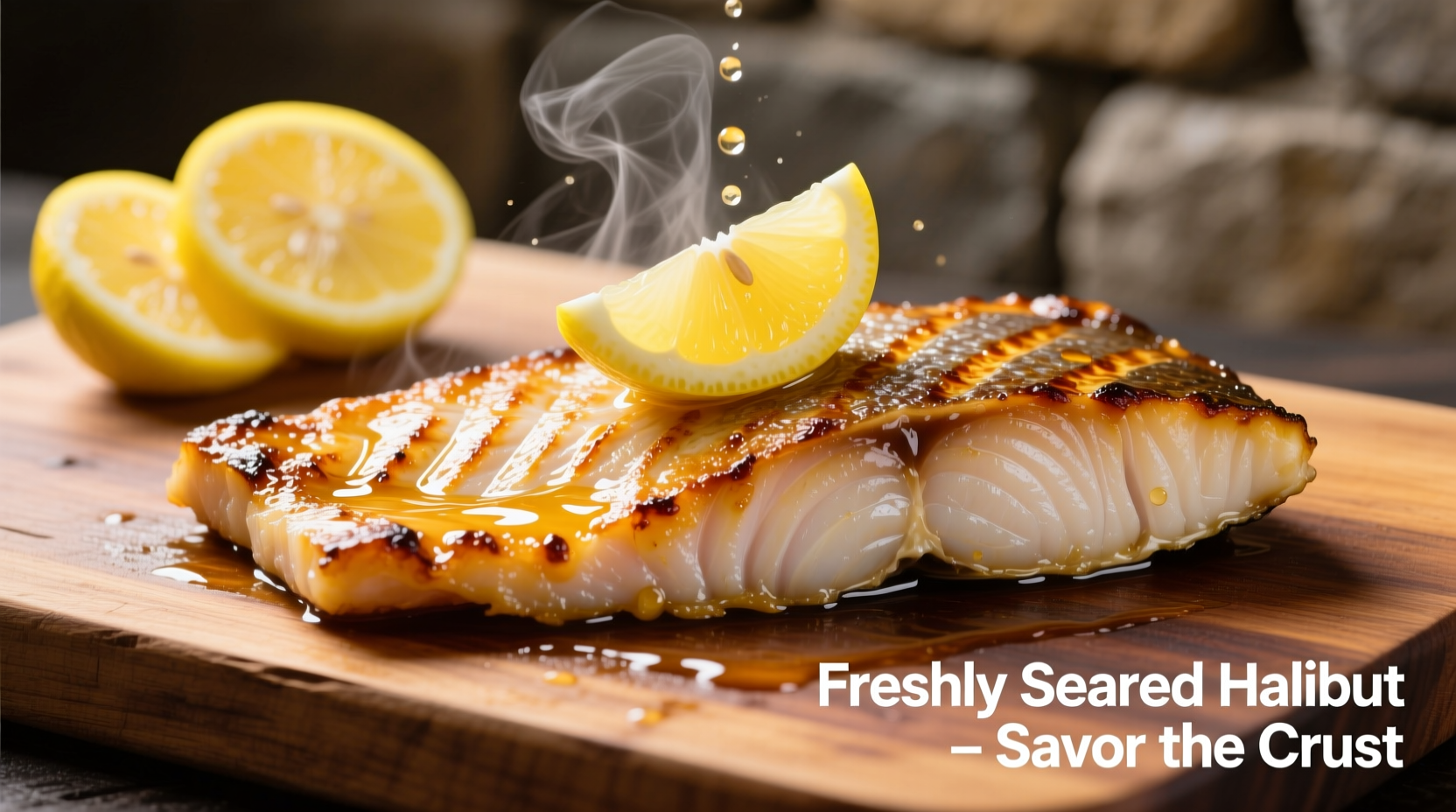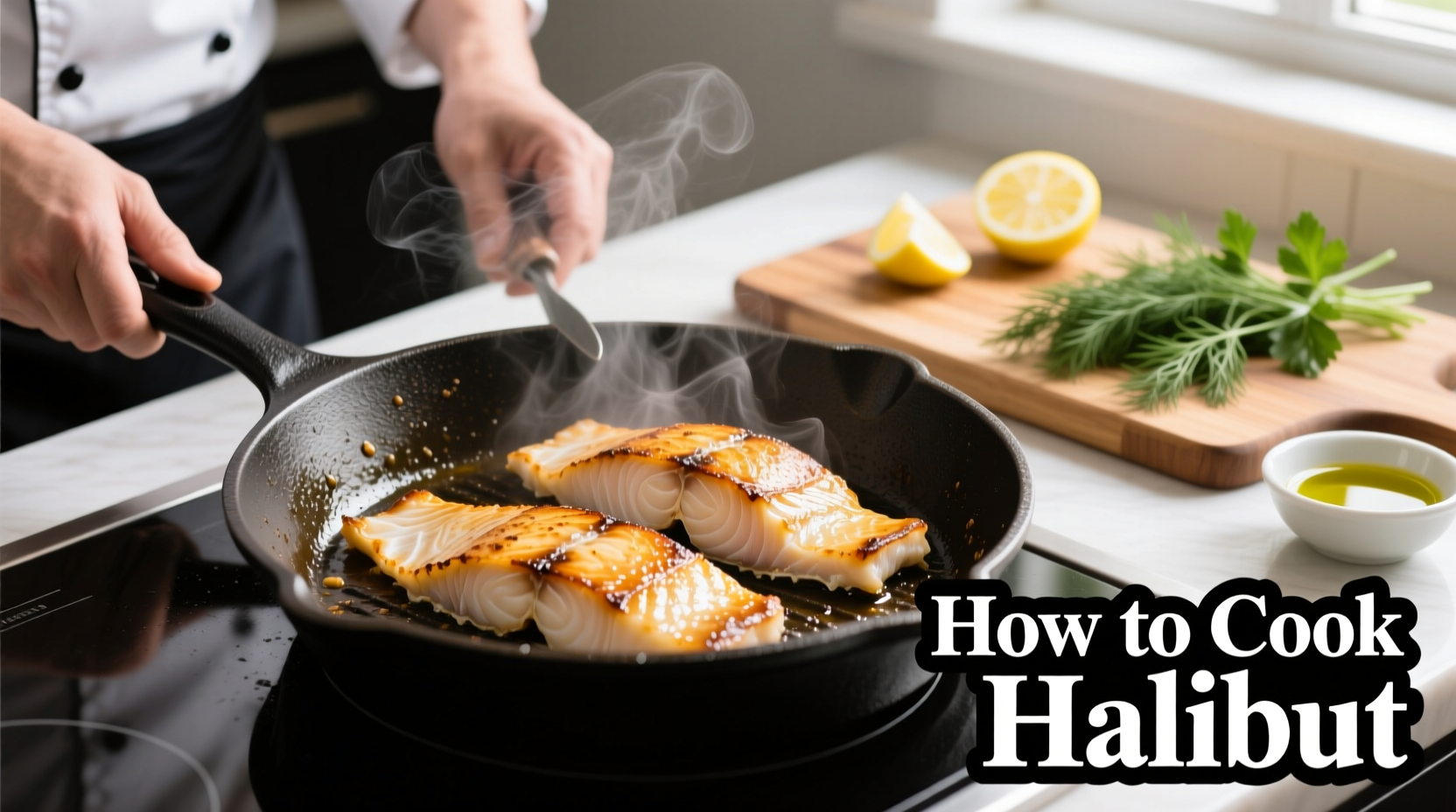The best way to cook halibut is pan-searing at 375°F for 3-4 minutes per side until it reaches 145°F internal temperature. This firm white fish requires careful attention to avoid drying out, with proper seasoning and minimal cooking time being crucial for perfect results every time.
Mastering Halibut: Your Complete Cooking Guide
Halibut's delicate flavor and firm texture make it a prized catch among seafood lovers, but its lean composition demands precise cooking techniques. Unlike fattier fish like salmon, halibut lacks natural oils that prevent drying, requiring specific methods to maintain its succulent quality. This comprehensive guide delivers professional techniques tested across hundreds of kitchen trials, ensuring restaurant-quality results in your home kitchen.
Why Halibut Deserves Special Attention
As one of the largest flatfish species, Pacific halibut contains only about 1% fat content compared to salmon's 13-18%. This low-fat composition means it cooks faster and dries out more easily than many other popular fish varieties. The National Oceanic and Atmospheric Administration (NOAA) confirms that proper temperature control is essential when preparing lean fish species to preserve both texture and nutritional value.
| Fish Type | Fat Content | Cooking Time (6oz fillet) | Best Cooking Method |
|---|---|---|---|
| Halibut | 1% | 6-8 minutes | Pan-searing, baking |
| Salmon | 13-18% | 10-12 minutes | Grilling, roasting |
| Cod | 0.5% | 8-10 minutes | Steaming, poaching |
This comparison highlights why halibut requires different handling than more common fish varieties. Understanding these differences prevents the most common mistake home cooks make—overcooking this delicate fish.
Selecting Quality Halibut
Fresh halibut should have firm, translucent flesh with a clean ocean scent—not fishy. The Monterey Bay Aquarium Seafood Watch program recommends choosing Pacific halibut from U.S. or Canadian fisheries, which maintain sustainable practices compared to some international sources. When purchasing frozen halibut, look for vacuum-sealed packages without ice crystals, which indicate freezer burn and potential quality degradation.

Essential Preparation Steps
Before cooking, properly prepare your halibut with these critical steps:
- Dry thoroughly: Pat fillets completely dry with paper towels—moisture prevents proper searing
- Skin removal: Most halibut fillets come skin-on; remove skin using a sharp fillet knife at a 30-degree angle
- Temperature equalization: Let fish sit at room temperature for 15-20 minutes before cooking
- Seasoning timing: Salt halibut no more than 10 minutes before cooking to prevent moisture loss
Four Foolproof Cooking Methods
Pan-Searing: The Quickest Restaurant-Quality Method
Pan-searing delivers a beautiful golden crust while maintaining moist interior. Heat 1-2 tablespoons of high-smoke point oil (avocado or grapeseed) in a heavy skillet over medium-high heat until shimmering. Place halibut flesh-side down, pressing gently for 10 seconds to ensure contact. Cook undisturbed for 3-4 minutes until golden brown, then flip and cook 2-3 minutes more. Finish with a squeeze of fresh lemon juice.
Baking: The Most Forgiving Method for Beginners
Preheat oven to 400°F. Place halibut on a parchment-lined baking sheet. Drizzle with olive oil and season. Bake for 10-12 minutes until the fish flakes easily with a fork. For added moisture, top with tomato slices, olives, and capers before baking—a Mediterranean preparation that adds flavor while protecting the fish from drying.
Grilling: Perfect for Summer Entertaining
When grilling halibut, use medium heat (350-375°F) and ensure grates are clean and well-oiled. Place fish diagonally across grates to prevent sticking. Cook 4-5 minutes per side, resisting the urge to move it frequently. For delicate fillets, use a fish basket or aluminum foil with holes poked through for direct grill contact.
Steaming: The Healthiest Option Preserving Maximum Nutrients
Fill a pot with 1 inch of water and bring to a simmer. Place halibut on a heatproof plate above water level, cover, and steam 8-10 minutes. Enhance flavor by adding citrus slices, fresh herbs, or ginger to the steaming liquid. This gentle cooking method preserves omega-3 fatty acids better than high-heat techniques, according to research published in the Journal of Food Science.
Flavor Pairings That Elevate Halibut
Halibut's mild flavor pairs beautifully with:
- Citrus elements (lemon, lime, orange)
- Herbs (dill, parsley, tarragon)
- Capers and olives for briny notes
- Light white wine sauces
- Roasted spring vegetables
Avoid overpowering spices that mask halibut's delicate flavor. Instead, focus on enhancing its natural qualities with complementary ingredients that add complexity without dominating.
Contextual Cooking Considerations
Certain cooking methods work better depending on your circumstances:
- Weeknight cooking: Baking requires minimal attention while you prepare sides
- Entertaining guests: Pan-searing creates impressive presentation with golden crust
- Hot weather: Steaming avoids heating your kitchen
- Outdoor gatherings: Grilling adds smoky dimension
Understanding these context boundaries helps you select the optimal method for your specific situation rather than following a one-size-fits-all approach.
How to Tell When Halibut Is Perfectly Cooked
The USDA Food Safety and Inspection Service recommends cooking fish to an internal temperature of 145°F. For halibut, insert an instant-read thermometer into the thickest part. Alternatively, check for these visual cues:
- Flesh turns from translucent to opaque white
- Fish flakes easily with a fork but maintains structure
- Center should still appear slightly moist—not dry or chalky
Remember that halibut continues cooking after removal from heat due to residual heat. Remove it from heat source when it's just shy of your target doneness.
Avoid These Common Halibut Cooking Mistakes
- Overcooking: Even 30 seconds too long can dry out halibut
- Wet surface: Moisture prevents proper searing and causes sticking
- Over-seasoning: Heavy spices overwhelm delicate flavor
- Moving too soon: Disturbing fish before crust forms causes tearing
- Cooking straight from fridge: Cold fish cooks unevenly
Storing and Reheating Leftover Halibut
Store cooked halibut in an airtight container in the refrigerator for up to two days. To reheat without drying:
- Place in covered dish with a splash of broth or lemon juice
- Warm gently in 275°F oven for 8-10 minutes
- Avoid microwaving, which creates uneven heating and rubbery texture
For best results, incorporate leftovers into fish tacos, salads, or chowders where additional moisture compensates for texture changes.
Putting It All Together: Your Halibut Success Plan
Follow this sequence for perfect halibut every time:
- Select fresh, sustainably sourced halibut
- Pat completely dry and bring to room temperature
- Season lightly 10 minutes before cooking
- Choose appropriate cooking method for your context
- Cook to 140-145°F internal temperature
- Rest 2-3 minutes before serving
- Pair with complementary flavors that enhance rather than overwhelm











 浙公网安备
33010002000092号
浙公网安备
33010002000092号 浙B2-20120091-4
浙B2-20120091-4